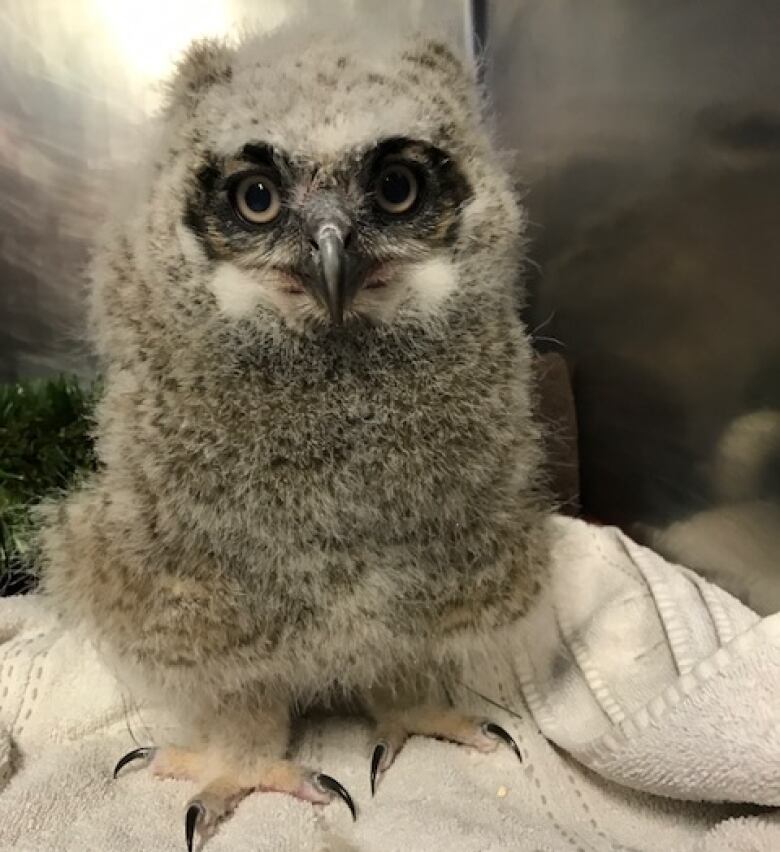Baby owlets rescued from concrete plant conveyor belt
Two baby owlets will be raised by foster owls named Oberon and Ophelia
The Calgary Wildlife RehabilitationSociety is used to rescuing, rehabilitating, then releasing strays, but the two baby great horned owlets who just moved in are a little younger than what they're used to.
"We got these guys fresh out of the egg, which is not normal for us," said JennaMcFarland, the animal care operations manager.Shespoke toThe Homestretch'sJenny Howe on Tuesday.
"Normally we get them in when they're starting to get really big and boisterous and tend to fall out of nests, usually between twoand threemonths old. Sothis is really unusual for us."
Conceived on concrete mixing conveyor
Theowlets had the misfortune of being conceived in a concrete plant.
"Their parents laid both of their eggs on a concrete mixing conveyor," McFarlandsaid.
"When the workers at the plant wanted to start up the machinery for the season, they realized there were owls in the machinery and eggs on the conveyor belt.
"We had to wait until those eggs hatched, then go and remove them."

'We had to kidnap the babies'
While theowletswere rescued and are healthy, that also effectively eliminated the possibility of a family reunion, she said.
"Unfortunately we had to kidnap the babies from their parents," McFarland said,"but we will be raising these guys with our foster owls so hopefully, they'll do really well [with them]."

Innate behaviour
In a few short days observing the owlets, McFarland has been struck by how much of their behaviour is nature, not nurture.
"Becausethey've spent less times with their parents than they have with us, we would expect that those natural owl behaviours would be delayed, or absent and they aren't. The natural defensive behaviour the shielding, thepeeping, the clacking it's all built into these guys.
"It's amazing how they don't really habituate to humans as well as we would expect, which is great. Andonce we get them outside with our foster great horned owls, who live here year-round, they'll really start to develop more of those owl-like behaviours."

Meeting foster owls
The owlets will be raised by Oberon, a one-winged great horned owl named after a character in Shakespeare'sA Midsummer Night's Dream, and Ophelia, named after a character in Hamlet, until they are strong enough to be released into the wild.
They haven't met their foster owls yet, but will soon, McFarland said.
"We're going toput them out thereonce they can perch on some branches with stability, so we're looking at probably a couple more weeks," she said. "We just gave them their first perch today they're not quite sure about it, they keep falling off."
"It's very low, don't worry."
- MORE CALGARY NEWS|It's the pollen you can't see that makes you sneeze, says Calgary doctor
- MORE CALGARY NEWS|Calgary crews fix 3,500 potholes in two months, city says
With files from The Homestretchand Jenny Howe













_(720p).jpg)


 OFFICIAL HD MUSIC VIDEO.jpg)
.jpg)



























































































